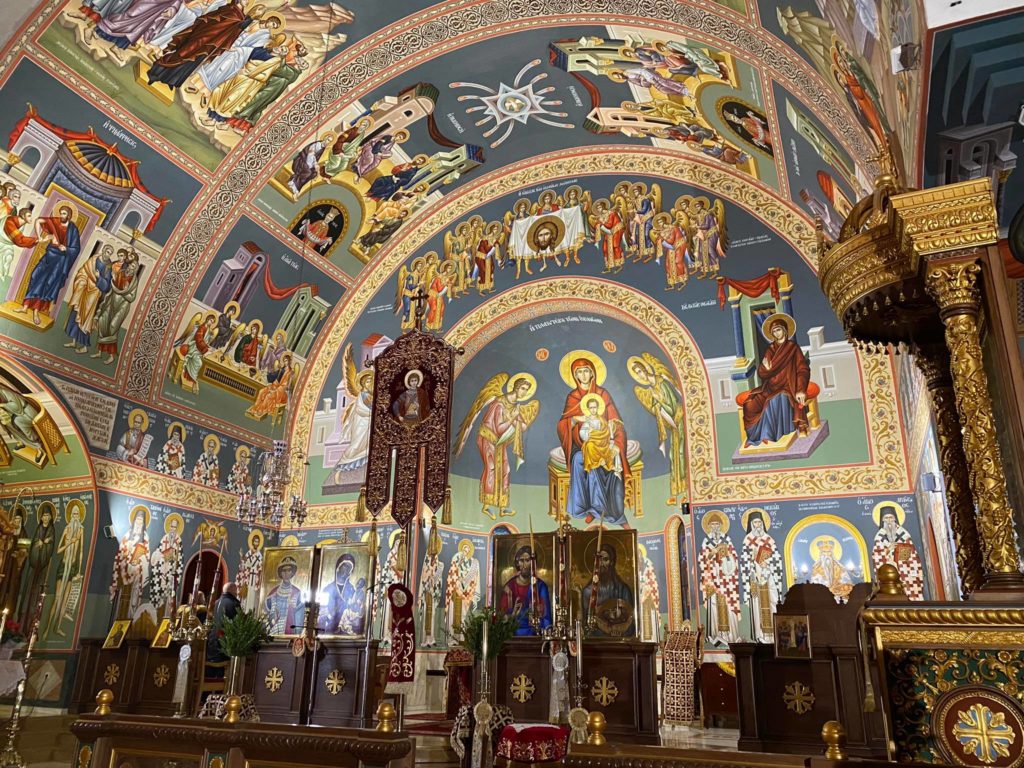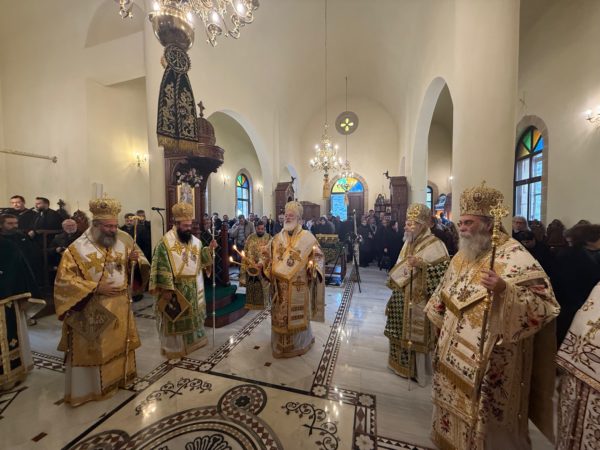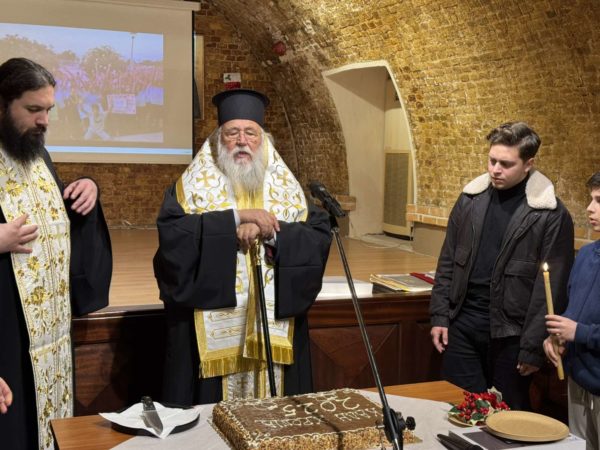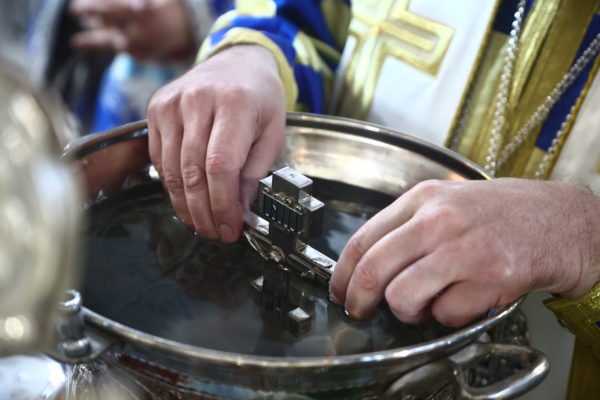Koliva: Definition and the Miracle of Saint Theodor Tyron – Photo Journal with Koliva
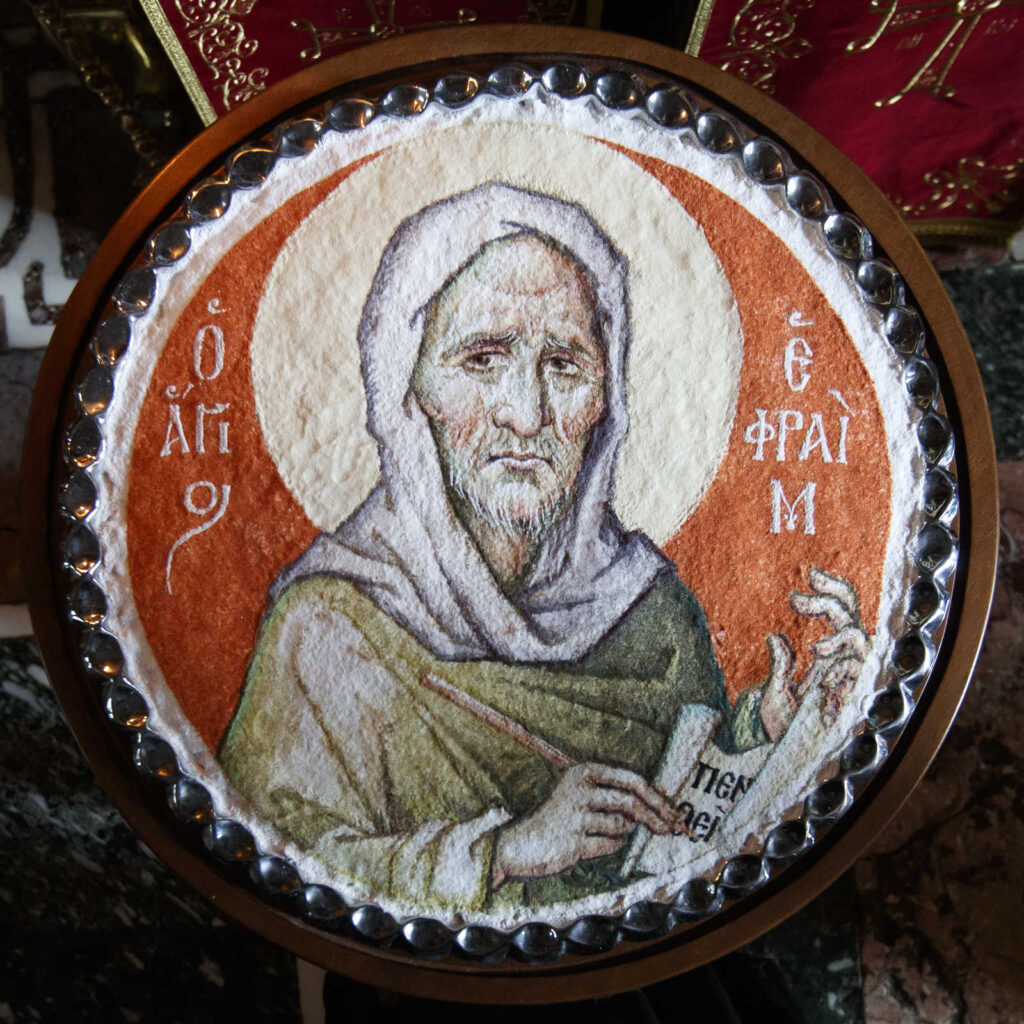
Koliva: Definition
Koliva is a dish, consisting of boiled wheat that is used liturgically in the Eastern Orthodox Church for commemorations of the dead.
In the Eastern Orthodox Church, koliva is blessed during funerals, as well as during the memorial service (mnemosyno) that is performed at various intervals after a person’s death and on special occasions, such as the Saturday of the Souls (ψυχοσάββατο).
History
Kollyba, a word which, in Greek, is the plural form of kollybo (κόλλυβο – itself rarely used), is derived from the Classical Greek word κόλλυβος, kollybos, i.e. a small coin or a small gold weight. In the Hellenistic period, the neuter plural form of the latter word, i.e. κόλλυβα, kollyba, took the meaning of small pies made of boiled wheat. This sense of a ritual food is of a latter period.
The Miracle of Saint Theodor Tyron
Koliva was introduced into the practice of the Church after the miracle of Saint Theodore of Tyron (Saint Theodore of Amasea), which happened about fifty years after this Saint’s death (February 17, 306), during the time of Emperor Julian the Apostate (361-363) who, wishing to mock the Christians, ordered the governor of Constantinople to sprinkle all supplies in the food markets with blood sacrificed to idols, in the first week of the Great Lent, because the Emperor knew that the Christians would be hungry after the first week of strict fasting, and would go to the marketplaces of Constantinople on Saturday to buy food.
Saint Theodore, appearing in a dream of Archbishop Eudoxios of Constantinople (360-370), commanded him to warn Christians not to buy anything from the market, but rather to eat boiled wheat with honey (koliva). Not long after this, the feast of the miracle of this Great Martyr Saint Theodore was scheduled in the calendar on the first Saturday of the Great Lent (more precisely during the time of Patriarch Nectary of Constantinople (381-397)). From then until today, on the first Saturday of the Great Lent, the remembrance of the dead and the commemoration of Saint Theodore Tyron are celebrated.
Symbolism
The symbolic use of Koliva in our Church services also shows that man may also be regarded as a seed, a fruit of the earth, now sowing itself on the earth like wheat, to again be resurrected with the power of God, rising in the life to be and bringing himself alive and perfect in Christ. For as any seed is buried in the earth, it will, upon rising, bring forth much fruit, so also a human, being given to the earth through death, will rise again.
The same thing is said by the Holy Apostle Paul, showing the theme of resurrection through the parable of sowing.
Based on Saint Symeon of Thessaloniki
The photos are from the process of decorating koliva at Vatopedi monastery, Mount Athos
— Source: asceticexperience.com
H αναδημοσίευση του παραπάνω άρθρου ή μέρους του επιτρέπεται μόνο αν αναφέρεται ως πηγή το ORTHODOXIANEWSAGENCY.GR με ενεργό σύνδεσμο στην εν λόγω καταχώρηση.
Ακολούθησε το ORTHODOXIANEWSAGENCY.gr στο Google News και μάθε πρώτος όλες τις ειδήσεις.









